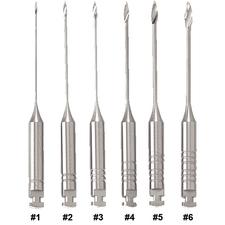DOs and DONTs in DENTISTRY
Saturday, December 14, 2013
Tuesday, December 10, 2013
Wednesday, June 26, 2013
Radiation-Induced Xerostomia and its treatment
Radiation-induced xerostomia is caused by the direct damaging effects of radiation on both major and minor salivary gland structures located in the radiation path.
Glandular tissue in general is very sensitive to radiation. Following radiation therapy, the mouth becomes dry as a result of the loss of salivary gland acini. The skin becomes dry as well because of loss of sweat and sebaceous glands.
Ductal epithelium is somewhat radiation resistant.
Glandular tissue in general is very sensitive to radiation. Following radiation therapy, the mouth becomes dry as a result of the loss of salivary gland acini. The skin becomes dry as well because of loss of sweat and sebaceous glands.
Ductal epithelium is somewhat radiation resistant.
Because most radiation ports leave some areas of mucosa untouched, there is an opportunity to stimulate the remaining glands to overproduce.
Although they improve mouth moisture in only about 70% of irradiated patients,
pilocarpine (Salagen, MGI Pharma), 5 mg by mouth three times daily, or
cevimeline (Evoxac, Daiichi Sankyo), 30 mg by mouth three times daily, often improves eating, speaking, and swallowing functions.
It must be given with caution to individuals with heart diseases associated with brachycardia, heart block, or medications such as beta blockers that may slow heart rate or conduction.
Additionally, sports water bottles are used by many individuals, and Evian atomized water spray has been found to be beneficial to many.
Radiation Caries and its management
Radiation caries results from xerostomia, which permits cariogenic bacteria to proliferate unopposed by the usual lysosomes and IgA immunoglobulins in saliva and causes the loss of the saliva’s natural buffering capacity.
Caries in nonirradiated individuals occurs in pits, in fissures, and interproximally. It is also chalky and soft from dissolved tooth structure.
Radiation caries, by contrast, is hard and black. It occurs at the gingival margin, cusp tips, incisal surfaces, or throughout the tooth.
Monday, June 17, 2013
Factors to be Considered when preparing a root canal
With the invention of nickel titanium instruments came the additional question of, “How wide should I make the taper of the preparation?” This essentially split clinicians into two schools of thought.
1. Those who prepare the apex to large apical sizes, such as 40 and above but use narrow tapers (4%).
2. Those who prefer less apical preparation size 20 or size 25 but use a wide taper (6% and above).
Thursday, May 23, 2013
Indications and potential limitations of Gates Glidden drills (GGDs) in endodontics

Gates Glidden Drill Basics
GGDs have been used for decades to shape the orifice and canal above the point of first curvature in endodontic procedures.
Traditionally they come in lengths of 28, 32 and 38 mm and in sizes #1-6, with size #1 being the smallest in diameter and #6 the largest.
Subscribe to:
Comments (Atom)




